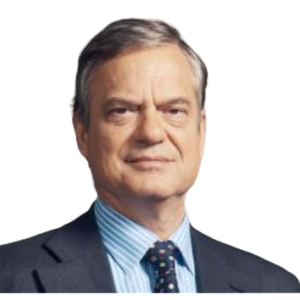Powell’s Last Stand: How Trump is Corralling the Fed
Markets once sighed with relief when Donald Trump shelved the idea of firing the Fed chair. That comfort was misplaced. A commentary by Lorenzo Bini Smaghi

When, following the strongly negative reaction of financial markets, Trump announced a few months ago that he would backtrack and give up on firing Federal Reserve Chairman Jerome Powell, many — including the author — breathed a sigh of relief.
Replacing the head of the central bank would have been a serious mistake. It would have dealt a severe blow to the independence of the monetary institution, which is one of the pillars of the dollar’s credibility in the international monetary system.
We must now admit that we were wrong.
Trump has not abandoned his objective of bringing the central bank under political control. He has only changed the way to achieve it. Rather than directly requesting Powell’s resignation, he now seeks to surround him with loyalists.
The first opportunity came with the resignation of one of the seven Washington-based Board governors, Adriana Kugler, at the beginning of August. Within a few days, Trump appointed Stephen Miran, head of his economic advisers, in her place.
Confirmation by Congress occurred at record speed, allowing him to take part in next week’s interest-rate decision.
It is also unusual that Miran did not resign from his White House position, limiting himself to requesting a leave of absence.
With Miran’s appointment, the number of potential dissenters from Powell’s proposed monetary policy has risen from two governors — those appointed by Trump in his first term — to three, out of a total of seven Board members.
They could even have been four out of seven, thus changing the majority immediately, if Trump had succeeded in forcing the resignation of Lisa Cook, accused of having made a false declaration in a mortgage application.
That move, however, did not succeed, as the federal judge ruled that the president does not have the authority to remove Cook until her guilt is proven. Trump nevertheless appealed and hopes to prevail soon.
The conciliatory attempts made by Powell to reduce Trump’s pressure have been of little use. At the annual Jackson Hole conference at the end of August, the Fed chair opened the door to a rate cut, since downside risks to growth and employment now seem to outweigh inflation risks, which nevertheless remain above 2%. Recent data lead markets to anticipate a cut of at least 25 basis points next week, if not 50.
It is likely that next week the newly arrived Miran, and perhaps the other two dissenters as well, will demand an even sharper rate cut, if only to put Powell in a difficult spot and to send a signal to the other members of the Federal Open Market Committee (FOMC), which includes the presidents of the 12 regional banks, five of whom vote on a rotating basis.
In fact, the presidents of regional banks are traditionally more conservative and less influenced by politics. However, the appointment of regional presidents expires in March 2026 and is subject to approval by the Washington Board.
Already, at the time of the appointment of the president of the Chicago Reserve Bank, two governors — precisely those appointed by Trump — abstained. An unprecedented event. Those intending to take overly intransigent positions in upcoming rate decisions have been warned.
The political manoeuvring around Fed appointments will, in any case, conclude in May of next year, when Powell’s term as chair expires. He will then be replaced by a loyalist of the president.
The selection process has already been launched, with significant media attention. The hypothesis that Powell will remain as a simple Governor, as he would be entitled to do until early 2028, after having lost the role of chair, appears remote. In summary, within at most eight months, the American central bank, though independent by statute, will be heavily influenced by politics, something that has not happened since the 1970s.
The latest torpedo was launched a few days ago by Treasury Secretary Scott Bessent, in an article in the Wall Street Journal announcing a revision of the central bank’s mandate.
Its powers will be restricted to setting interest rates and providing lending of last resort, while it will be stripped of its responsibility for supervising the banking system.
Without supervisory information needed to check the solvency of troubled banks, the provision of credit in crisis situations becomes subjected to political power.
The intention seems to be to extend the central bank’s safety net to non-bank institutions, such as cryptocurrency issuers.
All this is happening without any reaction from financial markets, unlike what occurred a few months ago.
The prospect of new rate cuts is propelling Wall Street towards new records, pushing everything else into the background. For now.
A first version of this article was published in the Italian daily Il Foglio
IEP@BU does not express opinions of its own. The opinions expressed in this publication are those of the authors. Any errors or omissions are the responsibility of the authors.
